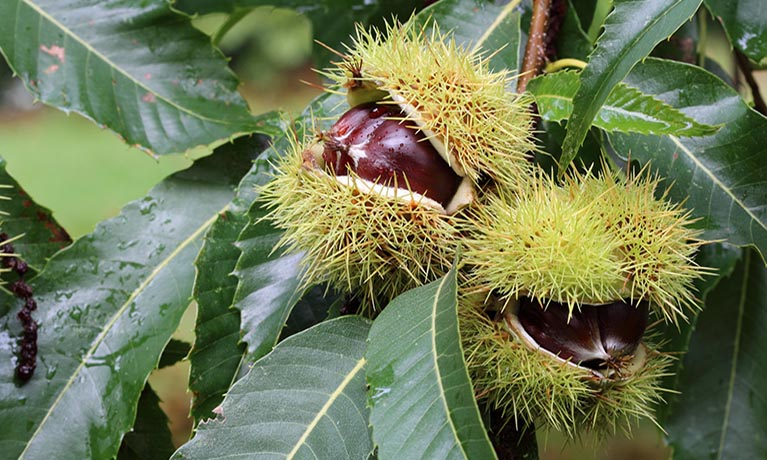Search
Coventry University calls on public to help protect sweet chestnut trees

Friday 30 April 2021
Press contact
Coventry University’s Centre for Agroecology, Water and Resilience (CAWR) has teamed up with The Royal Horticultural Society (RHS) on a new citizen science project to help save the at-risk sweet chestnut trees from an invasive pest.
Found in woods and parks throughout the UK, the iconic sweet chestnut (Castanea sativa) is a source of food for humans and wildlife – including bees, pollinators and red squirrels - and can live for up to 700 years when healthy.
Thought to have been introduced by the Romans, the trees are now under threat from newly arrived Oriental Chestnut Gall Wasps (Dryocosmus kuriphilus). First discovered in the UK in 2015, these tiny wasps spread through flight and likely entered the UK through plant imports.
Samantha Green, CAWR Research Assistant, says: “The wasp larvae cause abnormal growths, known as galls, on the buds and leaves of the tree. In high numbers these can weaken the host tree, making it more vulnerable to other pests and diseases.
“Most sweet chestnut trees can be found in the south of England, but some have been found farther north than the Cairngorms. Beyond this, very little is known about their distribution, making it difficult to fully understand the threat and provide effective protection.
We need the public, not only nationally but locally, to help us map their locations and health.
Samantha Green, CAWR Research Assistant
To take part in the Check a Sweet Chestnut survey, members of the public can register on the RHS website and log their findings online via the TreeZilla and TreeAlert reporting tools. Training materials are provided to help identify and measure sweet chestnut trees and to recognise signs of poor health.
RHS Plant Pathologist Jassy Drakulic says: “Organisms that arrive from abroad and attack trees are on the rise, with an average of six new species arriving in Europe each year. Citizens as a collective can gather huge amounts of data that would never be possible with official inspections and surveys.
“We hope that by finding and measuring sweet chestnut trees, this will breathe new life into the trails many people will have often walked in lockdown, and that the project will inspire people to appreciate and learn more about the trees in their area.”
Check a Sweet Chestnut, is funded by the EU Horizon 2020 project HOMED (Holistic Management of Emerging Forest Pests and Diseases), and data gathered during the project will help the Forestry Commission monitor pests and diseases.
Find out more about the CAWR.



